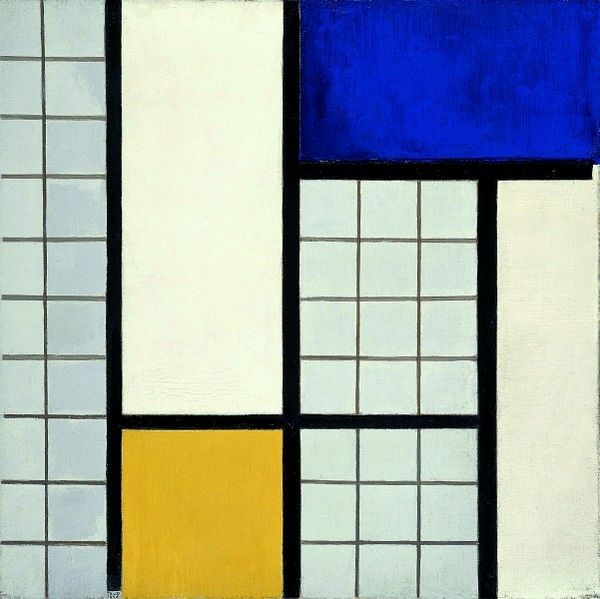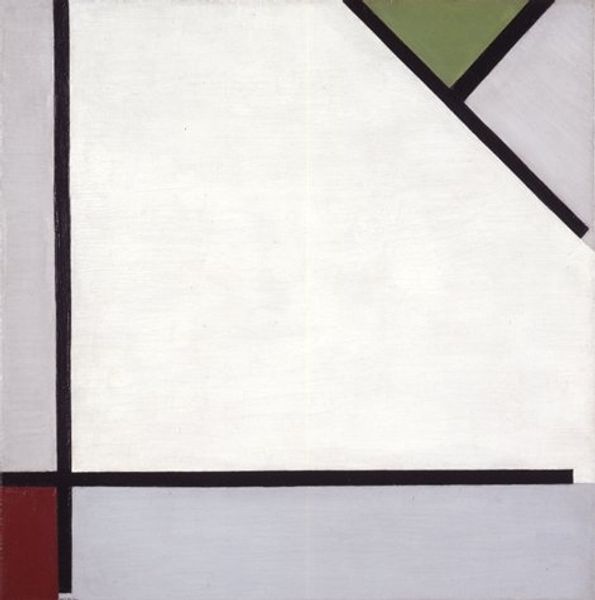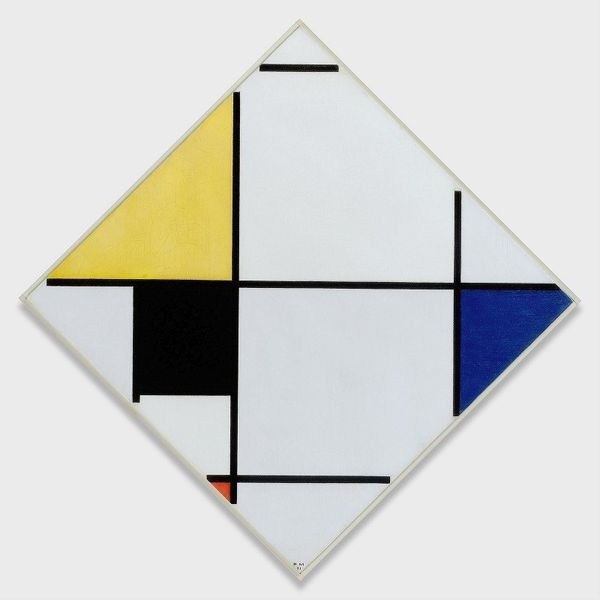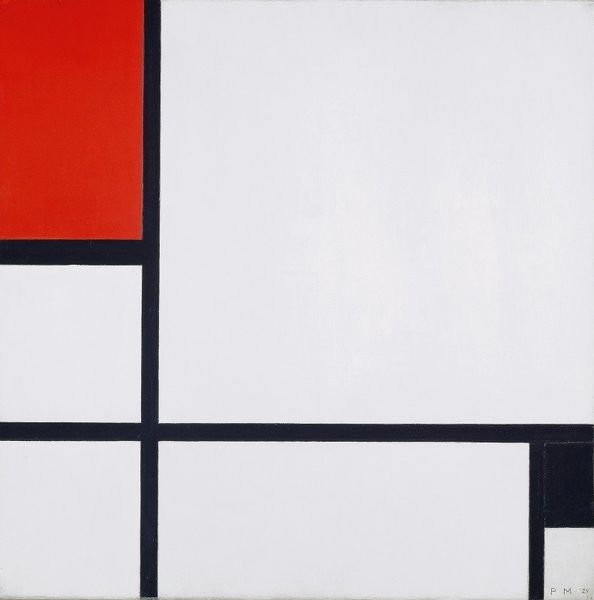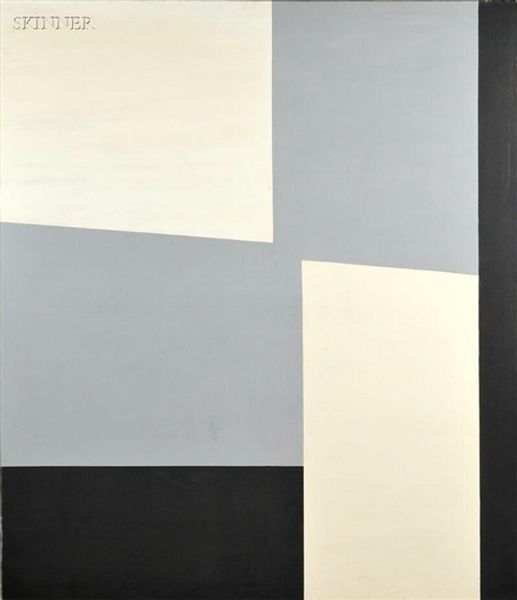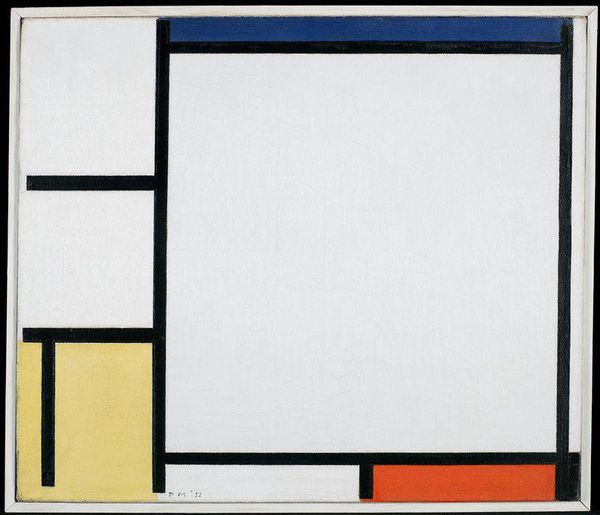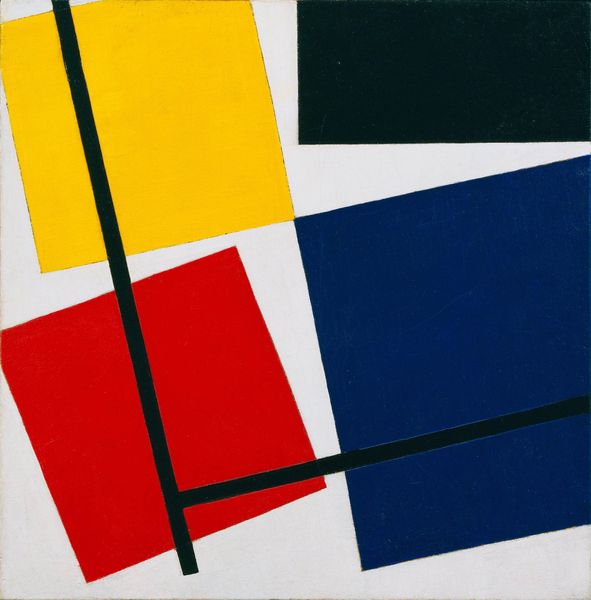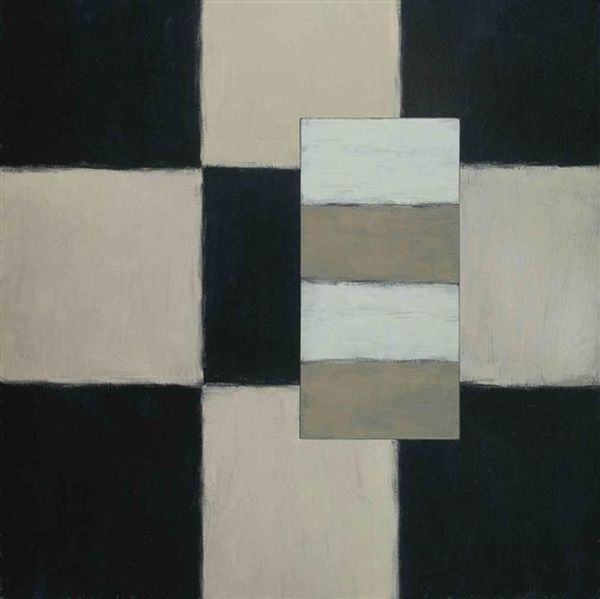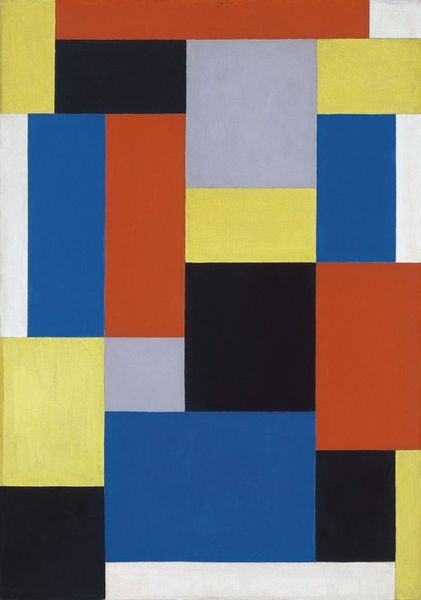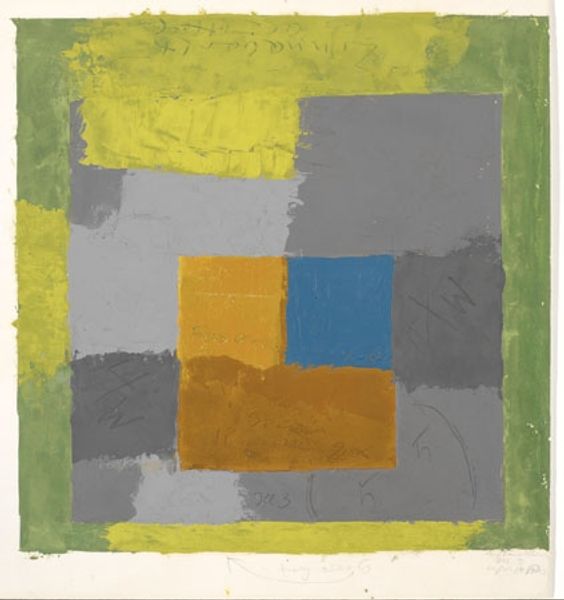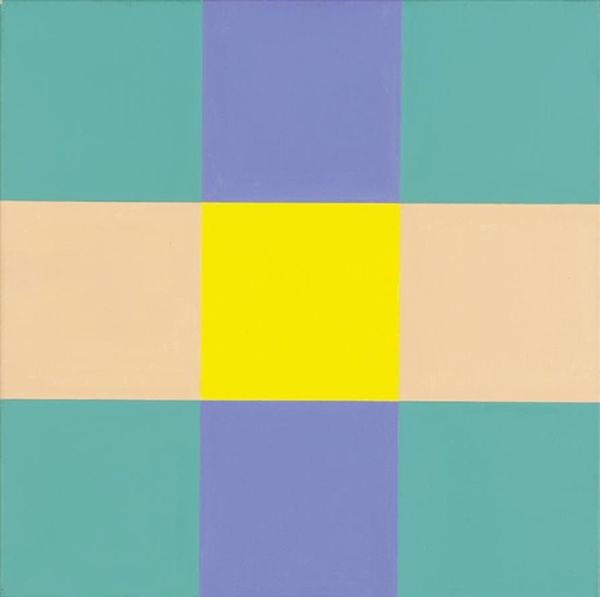
painting, oil-paint
#
de-stijl
#
neo-plasticism
#
abstract painting
#
painting
#
oil-paint
#
geometric composition
#
abstract
#
form
#
tile art
#
geometric
#
abstraction
#
line
#
abstract composition
#
modernism
Copyright: Public Domain: Artvee
Curator: Up next we have Theo van Doesburg's "Simultaneous Composition," completed in 1929. It's an oil on canvas, a prime example of the De Stijl movement. Editor: My first impression is a feeling of restrained energy. The stark lines and primary colors are quite bold, yet there's a calming balance in how they are arranged. Almost like a Mondrian but...with a twist. Curator: Indeed! Van Doesburg, while initially aligned with Mondrian and Neo-Plasticism, eventually diverged in his artistic philosophy. You see, he introduced diagonal elements, which was a point of contention between them. Editor: That's right. It's almost as though he were challenging the rigidity of Mondrian's devotion to verticals and horizontals. I think his move can be interpreted as questioning the very notion of prescribed harmony. What's harmonic about enforced rules, after all? Curator: A radical view! This work challenges the institutional embrace of geometric abstraction, particularly in its later interpretations. The controlled palette, pared down to blue, yellow, white, and gray, still reflects De Stijl’s emphasis on essential forms, and evokes universalism through basic colors and shapes. Editor: Yes, though the diagonal gives it more...dynamism, perhaps? Makes me think about the societal disruptions of the early 20th century and challenges to authority—art reflecting real-world tension. Do you see a political undercurrent here? A subtle dissidence in those tilting lines? Curator: That’s certainly a compelling reading! While De Stijl aimed for universality, locating it within the societal shifts certainly opens a new interpretive door. It also reminds us that movements in art are never monolithic; the personal and the political invariably find a way in. Editor: I’ll carry that idea forward as I continue my gallery tour! Curator: And I'll remember that not all revolutions are fought on a horizontal or vertical plane!
Comments
No comments
Be the first to comment and join the conversation on the ultimate creative platform.
